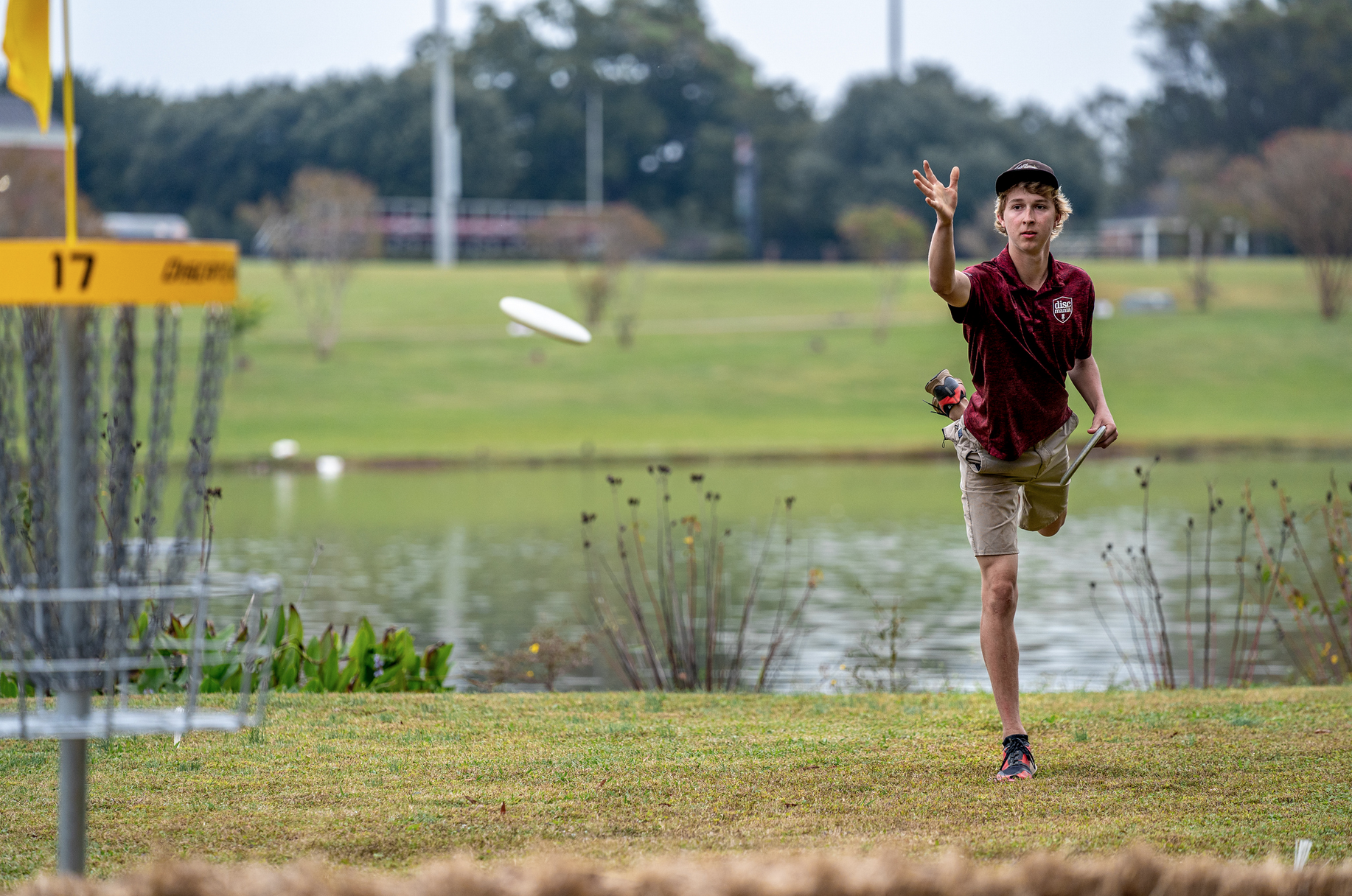
Kyle Klein putting at the 2020 U.S. Disc Golf Championship. Credit: Alyssa Van Lanen
Tail Wind Putts
Putting with a tailwind in disc golf presents unique challenges and requires specific skills to overcome. It is crucial to understand the intricacies of this technique as it can significantly impact your performance on the course. Putting with a tailwind demands adjustments in grip, release, aim, and power control to combat the wind's effects. By mastering the techniques and strategies discussed here, you can gain confidence and consistency when faced with tailwind conditions.
Understanding Tailwind Conditions
A tailwind refers to the wind blowing in the same direction as the intended flight path of the disc. Tailwinds create challenges for putting, as they can increase lift and decrease stability, potentially carrying the disc past the target. Understanding the impact of tailwinds on disc flight is key to making necessary adjustments and maintaining control in these conditions.
Technique Adjustments
To counteract the tailwind's effects, modifying your grip is essential. Use a firm grip that provides increased control during the release. Maintaining a smooth and consistent release helps minimize any unwanted lift caused by the tailwind.
Tailwinds require adjustments in both aim and power. To compensate for increased lift, lower your aim point slightly to offset the upward force of the wind. Additionally, reducing power and throwing with less force can help mitigate the tailwind's impact and maintain accuracy.
Disc selection also plays a role in managing a tailwind. Opt for more stable or overstable discs that resist the influence of the wind, providing greater predictability and control. These discs are less likely to be affected by the tailwind's lift and are better suited for combating wind-induced turn.
Execution Techniques
Putting with a tailwind requires maintaining a consistent line and alignment to navigate the wind's effects. Adjust your focus and aim points to compensate for the wind's influence on the disc. Maintaining a disciplined approach to line and alignment will improve accuracy and help you combat the tailwind's challenges.
In tailwind conditions, a smooth and controlled release is crucial. Focus on maintaining proper form and following through with your putt to minimize the impact of the wind. By executing a clean release with control, you can reduce the chances of the disc lifting or being carried off target.
Practice Strategies
Incorporating wind simulation drills during practice can help you better understand and adjust to tailwind conditions. These drills allow you to practice maintaining control, consistency, and accuracy in the face of a tailwind. Focus on developing a smooth and consistent release while adjusting power and aim to handle varying tailwind intensities.
Be intentional about adjusting power and aim during practice sessions. Experiment with different power levels and aiming points to find what works best for you. Practicing these adjustments will build your confidence and minimize the impact of tailwind conditions on your putting performance.
Common Challenges and Troubleshooting
Challenges in tailwind putting can include adjusting to the wind's influence, maintaining a consistent release, and managing power control. To troubleshoot these challenges, focus on refining your grip, maintaining focus during the putt, and practicing adjustments to power and aim. Analyze your technique, remain adaptable, and make necessary adjustments to improve your tailwind putting skills.
Conclusion
Putting with a tailwind requires specific techniques and adjustments to maintain control and accuracy in challenging wind conditions. By understanding the intricacies of tailwind putting, practicing under realistic wind conditions, and refining your technique, you can elevate your performance and overcome the challenges posed by tailwinds. Embrace the opportunities for improvement, employ adaptable strategies, and strive for consistency in your tailwind putting game. Through practice and determination, you can excel in tailwind conditions and enhance your overall disc golf performance.